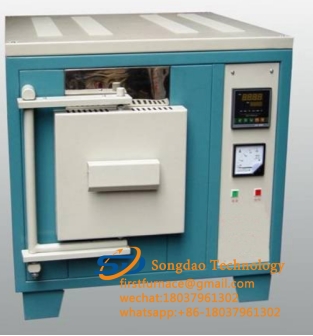- 21
- Dec
Precautions for the use of silicon carbide rods for experimental electric furnaces
Precautions for the use of silicon carbide rods for experimental electric furnaces
1. When using an electric furnace, the furnace temperature should not exceed the rated temperature for a long time to avoid damage to the heating element. It is forbidden to pour various flammable liquids and molten metals into the furnace.
2. The silicon carbide rod is hard and brittle, so be careful when loading and unloading.
3. The silicon carbide rods should be stored in a dry place to prevent deterioration of the aluminum-plated end due to moisture.
4. Molten KOH, NaOH, Na2CO3 and K2CO3 decompose SiC at the red heat temperature. Silicon carbide rods will be corroded in contact with alkali, alkaline earth metals, sulfates, borides, etc., so they should not be contacted with silicon carbide rods.
5. The wiring of the silicon carbide rod should be in close contact with the white aluminum head at the cold end of the rod to avoid sparking.
6. The silicon carbide rod reacts with Cl2 at 600°C and reacts with water vapor at 1300-1400°C. The silicon carbide rod is not oxidized below 1000°C, and is significantly oxidized at 1350°C, at 1350-1500°C. A protective film of SiO2 is formed in between and adheres to the surface of the silicon carbide rod to prevent the SiC from continuing to oxidize.
7. The resistance value of the silicon carbide rod increases as the use time of the silicon carbide rod increases, and the reaction is as follows:
SiC + 2O2=SiO2 + CO2
SiC + 4H2O = SiO2 + 4H2 + CO2
The higher the content of SiO2, the greater the resistance value of the silicon carbide rods. Therefore, the old and new silicon molybdenum rods cannot be mixed, otherwise the resistance value will be unbalanced, which is very unfavorable to the temperature field and the service life of the silicon carbide rods.

